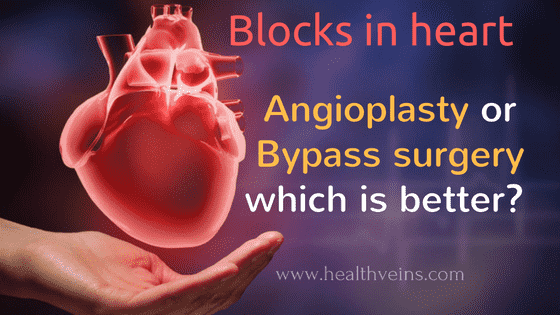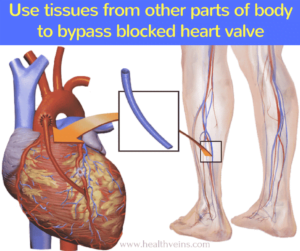Surgical treatments for clearing heart blocks are of two types, angioplasty and Bypass surgery. Which treatment to go for is depending on the type and intensity of the blockage in heart valves. These two type of treatments are mainly done if you experience chest pain due to the blocks in heart valves. In this article, you can read about the difference between angiography and bypass surgery. And after reading the contradiction between both treatments you may decide on angioplasty or bypass surgery which is better.
1. Angioplasty
Angioplasty is done by penetrating a narrow pipe called catheter into the blocked blood vessels. This will install a stent in the blocked area and make the blood easier to flow through it. This can be done without any major surgical injuries. The patient should take proper medicines as per the prescription of the cardio physician. And do cardio exercises after the heart attack and stent insertion to the heart veins.
After angioplasty?
Normally after doing angioplasty patient can leave the hospital within two days. If angiogram is done through the blood veins in the hands then they can leave hospital on the same day itself. While doing angioplasty the catheter is inserted into the body via blood vessels in the hands. There will be only a mark of a needlepoint after doing angioplasty.
As per the advice of cardio doctor they should take extra care after heart stent is done. Most patients can leave the hospital after two days in observation One should take rest at least for a weeks time. And after that, they can start to do activities as such in their day to day life. But should follow the daily routine and medicines prescribed by the doctor. If you experience shortness of breath after heart stent is done, consult this with your cardio consultant.
2. Bypass surgery
Coronary bypass surgery is done by opening the chest portion to expose the heart. Anesthesia is given to the patient while performing the surgery. With bypass surgery, blocks in heart valves are cleared by routing the blood through a passage which is made artificially. Blood is routed through a blood vein taken from any other part of the body. The borrowed tissue is called graft.
After bypass surgery
In normal case after bypass surgery patient may discharge from the hospital in between 5 to 7 days. And will be able to come back to normal living after 3 weeks rest, may vary according to the intensity of the surgery. And after 3 more weeks, they can start doing small daily routines. Make sure not to do tasks that are heavy.
Since the surgery is done by cutting bones above the heart. It takes about 6 weeks for this bone to rejoin. We should take extra care for not to do any heavy tasks during these 6 weeks after the surgery. You will experience pain in areas of the heart where the artificial vein is stitched if heavy tasks are done.
Angioplasty or bypass surgery which is better?
Now you have understood the contrasting between both surgical methods of treating heart blocks. And you might be able to decide on angioplasty or bypass surgery which is better suiting your heart condition.
Cardio doctors decide between these two treatments based on the intensity and severeness of the block. In most cases, if the heart blocks are not that serious or it is detected at the early stage self, then the best option is to do angioplasty. And angioplasty won’t cost heavy.
If it’s chronic heart disease or when the disease is detected at the critical stage then you might require doing the bypass surgery. This purely depends on of the intensity of blocks. Cardio doctors make the patient undergo various tests to determine whether it can be cured by medicine or angioplasty.
If the block is beyond the control of those treatments then doing bypass surgery will the alternative.
However, blocks which are minor are treated with medicines in most cases. You won’t have to do either angioplasty or bypass for minor blocks. In such cases, cardiologist usually prescribes medicines which are meant to dissolve the built-in plague which cause the block.
It takes about few months for the medicine to completely clear the blood vessels. And later the patient is instructed to retune the daily routine and lifestyle to support future health of the heart, accompanied by supporting medicines.


